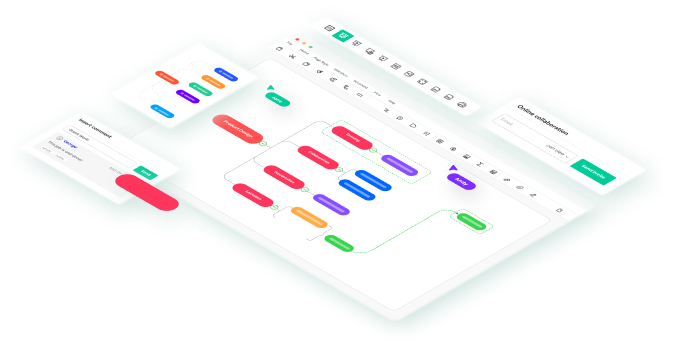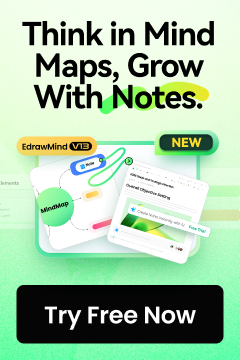The correct approach must be adopted in project management as it can either make or break your project. To this end, Kanban and Waterfall are two distinct but widely adopted approaches with the same ultimate goal of project success.
- As a concept, Kanban comes from the manufacturing industry and allows visual solutions for workflows that can be upended with varying tasks and priorities.
- On the other hand, Waterfall remains a linear model with little variation and emphasizes working through each phase step-wise.
To leaders and teams intending to maximize the efficiency of their performance, it is quite critical to appreciate the different applicable strategies, assess their strengths, and determine how to integrate them so that a hybrid model is effective.
This article introduces the two most prominent project management approaches, Kanban vs Waterfall, and discusses their advantages and applications so that you make an informed choice while selecting your strategy.
In this article
What Is Kanban?

Although Taiichi Ohno first proposed the concept of kanban in the manufacturing sector, David J. Anderson was the first to apply it to IT, software development, and knowledge work in general in 2004.
In collaboration with other writers and thinkers, including Taiichi Ohno, Eli Goldratt, Edward Demmings, and Peter Drucker, David synthesized the Kanban Method, developing it from ideas such as pull systems, queueing theory, and flow.
The Kanban technique is best understood in the context of knowledge labor. David attributes this market evolution to his first book, published in 2010, “Kanban: Successfully Evolutionary Change for Your Technology Business.”
Whether you work in software development, IT/ops, staffing, recruitment, sales and marketing, procurement, or another area, the Kanban Method is a technique that helps you continuously improve your work. Using the Kanban Methodology's principles can help practically any company activity.
Principles and Practices of Kanban
The Kanban Method provides workflow governance and improvement while observing rules and policies. It is a non-radical, progressive strategy that promotes stepwise changes to an organization's processes.
You can implement Kanban to reap these core principles and practices in your business process. These include improved flow, decreased cycle time, increased customer value, and increased predictability, all of which are critical for any firm in the modern world.
What Is Waterfall?

The waterfall technique's linear and sequential structure defines it as a typical project management strategy. Although it originated in construction and manufacturing, Dr. Winston W. Royce embraced it in 1970 for software development.
Essentially, this model allows a project to progress through gathering requirements analysis, system design, system construction, system testing, integration, deployment, and ongoing maintenance. One rarely completes one step before commencing the next.
Such a controlled approach, which is very detail-oriented, is appropriate for projects with known requirements and very little likelihood of significant changes.
The distinct phases of a waterfall and its predictability make it easier to monitor development progress and resource requirements. However, its rigidity might make accommodating changes once the project progresses challenging, which could be a concern if the baseline requirements are not adequately specified.
In previous years, project management applied the waterfall methodology, but since it is a stiff approach, other iterative approaches, such as Agile, have popped up and are more suited for dynamic environments. However, waterfalls apply to projects with constant requirements and are ideal where they are required.
Differences Between Kanban and Waterfall
The two approaches to project management, Kanban and Waterfall, have distinctive features that belong to each.
Flexibility:
- Kanban is very flexible, as changes and improvements can be made at any point in the project’s lifecycle.
- In contrast, the Waterfall model has rigid and linear sequences, making it difficult to make changes after a stage is finished.
Workflow Visualization:
- Kanban boards help identify bottlenecks by visualizing work stages, making it easier to understand the different stages of work.
- This is impossible in the Waterfall model, where there are no visual workflow aids; therefore, work progress is only recorded using text elements.
Process Structure:
- Kanban has no fixed phases, which means it can be a perennially evolving process with deliveries at any time.
- A waterfall approach is purely sequential, with distinct phases occurring one after the other.
Change Management:
- Changing conditions in the case of Kanban can be witnessed at any stage, making it highly adaptive.
- Once a stage in the waterfall model is reached, it is difficult to make changes. A lot of energy is required to revert to an earlier stage.
Documentation:
- Waterfall emphasizes adequate documentation and proper records at every stage, as well as guidelines for each phase.
- Kanban, on the other hand, might have less documentation as it focuses more on visual management and uses visual and team communication to perform task management.
Knowing these differences is crucial to choosing the right methodology for specific situations, project requirements, and organization particularities.
Similarities Between Kanban and Waterfall
| Aspect | Kanban | Waterfall |
| Goal Orientation | Aims to deliver high-quality products efficiently. | Aims to deliver high-quality products efficiently. |
| Process Clarity | Defines clear processes and workflows. | Defines clear processes and workflows. |
| Team Collaboration | Encourages collaboration among team members to achieve project objectives. | Encourages collaboration among team members to achieve project objectives. |
| Progress Tracking | Provides mechanisms to monitor and track project progress. | Provides mechanisms to monitor and track project progress. |
How to Choose from Kanban and Waterfall
Choosing the correct project management methodology can enhance efficiency and effectiveness.
Kanban and Waterfall are two completely different frameworks that define distinct processes. Knowing when to employ each one can boost project performance to great heights.
When to Use Kanban?
Kanban is an efficient and effective flexibility-oriented visual approach and a workflow management technique that facilitates continuous work delivery while ensuring development teams are not burdened with excessive work cycles. It works best for the following situations:
- Projects with evolving requirements: In scenarios where project requirements do not seem to be fixed, or the scope has not yet been fully established, it is very helpful that priorities and new information can be changed without disrupting precedence. Kanban helps meet these needs.
- Continuous delivery needs: For projects that require active provision and response to feedback, quasi-final work is constantly delivered, making it possible to IP and deliver the required features or updates as soon as they are ready.
- Focus on workflow optimization: Workflow tools, live boards, and work-in-progress limits satisfy the Akaikin law and allow for the timely identification and mitigation of processes causing delays almost automatically. Kanban enhances the productivity of firms that wish to refine processes.
- Service-oriented projects: Whenever there is a problem with operations or maintenance, and it is not always the same and not always predictable in terms of timing, Kanban assists teams in assigning and ranking tasks without needing fixed iterations.
When to Use Waterfall?
Waterfall is a more sequential project management technique that sees a project progress through stages. It suits the following:
- Well-defined requirements: Overall, Waterfall suits projects quite well with stable requirements and no changes throughout the course, especially where the focus is on detailed planning and documentation because of the project management approach used in the Waterfall model.
- Regulatory compliance: Industries such as healthcare, finance, or government units where there is a need to maintain high standards and documentation for each phase benefit from Waterfall since it is the model that promotes high documentation at each phase.
- Fixed scope and timeline: When projects have particular terms, such as scope and timeline, and very few, if any, significant changes are likely to occur, the Waterfall model is quite beneficial. It comprises sequential phases, which roadmap the project terms for easy tracking and resource allocation.
- Complex interdependencies: The waterfall methodology, a sequential project management technique, can also benefit projects with highly constrained dependencies and the need to complete tasks sequentially.
Making the Decision
When choosing between the Kanban and Waterfall methodologies, you must consider various factors, including project complexity, flexibility, stakeholder requirements, and industry-level trends.
Evaluating these factors will enable you to choose a methodology appropriate for your project's objectives and boundaries.
How to Create a Kanban Board
EdrawMind is an easy tool that can speed up the implementation of the Kanban method. It is versatile mind maps and project management software with quality Kanban features. With EdrawMind, you can track milestones, create workflows, and build and manage Kanban boards.
Due to its intuitive design, EdrawMind makes it easy to create and change boards according to the specific project's needs. However, although there are many functions in EdrawMind, you need a subscription to access the Kanban function.
The premium version of EdrawMind is where the Kanban function will be integrated. We recommend upgrading your tools for the course. This will help in improving your agile development process. You will be able to get these functionalities.

To create a Kanban board with EdrawMind, follow these five steps:
Step 1
Download EdrawMind or Try it Online for Free. Then, sign up or log in using Wondershare or your social media account credentials.
Step 2
Select Task Kanban from the Home page.

Step 3
This redirects you to the Kanban default version, where you can make changes such as adding more columns, cards, texts, etc.

Step 4
You can move the cards from one column to another simply by drag and drop.

Step 5
Share this project board with people you want to engage in your project by clicking on the Share icon on the top right.







